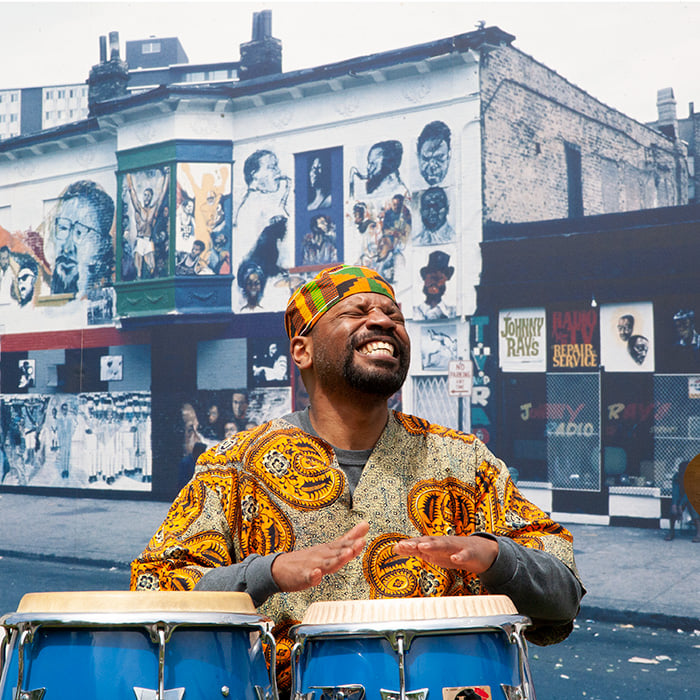Wall of Respect

It had a short and contentious existence, but the Wall of Respect has an outsize influence and importance. In 1967, a group of African American artists formed the Organization for Black American Culture – OBAC, which sounds like the Yoruba word for chieftain. Inspired by ongoing civil rights struggles and the emergent Black Power movement, the Visual Arts Workshop of OBAC decided to collectively paint a mural celebrating African American heroes on the side of a building at 43rd Street and Langley Avenue.
While the exact genesis of the idea is debated, seasoned muralist William Walker seems to have suggested the location, while Illinois Institute of Technology student Sylvia Abernathy designed the general scheme. The mural would feature more than 50 portraits and be divided into seven sections that followed the building’s architectural features: Statesmen (such as Malcolm X), Athletes (Muhammad Ali), Rhythm and Blues (Aretha Franklin), Religion (Nat Turner), Literature (Gwendolyn Brooks), Theater (Cicely Tyson), and Jazz (Miles Davis). Different artists worked on each section in his or her own style.

On August 5, 1967, the artists assembled at 43rd Street and Langley Avenue, outside a building that housed a bar and a TV repair shop. While the business owners had agreed to the project, the white absentee landlord hadn’t been asked. The artists began to paint.
Explore other murals in Chicago through a gallery of murals in Pilsen, a profile of a prominent Pilsen muralist, and a story about the intersection of art and activism in Pilsen.
The collective effort became a community event: people came to watch, musicians played, and poets recited as the artists painted the 20-by-60-foot span, and OBAC photographers posted some of their portraits on the wall. Less celebratory people arrived, too: some of the artists have claimed that undercover cops and FBI agents monitored the work.

Watch: The Wall of Respect
The Wall of Respect was dedicated on August 27, 1967 – only a few weeks after the unveiling of another, very different, piece of public art, the Loop’s Picasso – in a celebration that included the reading of poems by Don L. Lee, now Haki Madhubuti (“picasso ain’t got shit on us,” his poem says) and Gwendolyn Brooks (who had also read at the dedication of the Picasso).
The Wall quickly became a tourist attraction and a political gathering place. It continued to evolve, as portraits were added or removed (perhaps against some of the artists’ will; this is a contested aspect of the Wall’s history). Within a year or two, similar public murals were appearing in cities across the country, some even sharing the same name. A people’s art movement, grounded especially in the expression of minorities, had been sparked, including here in Chicago. The original Wall may have been destroyed in 1971 after a suspicious fire damaged the building, but it lives on in the spirit of murals and public art across the country.
Discover the career of Justine DeVan, an artist inspired by the Wall of Respect, who defied racists and street gangs to create murals throughout Chicago.




